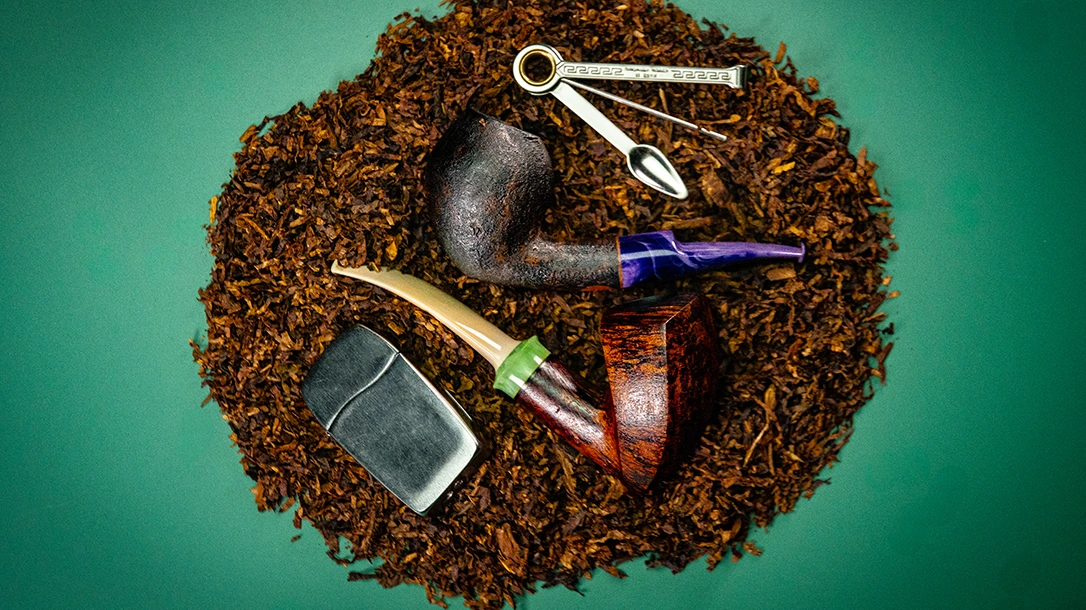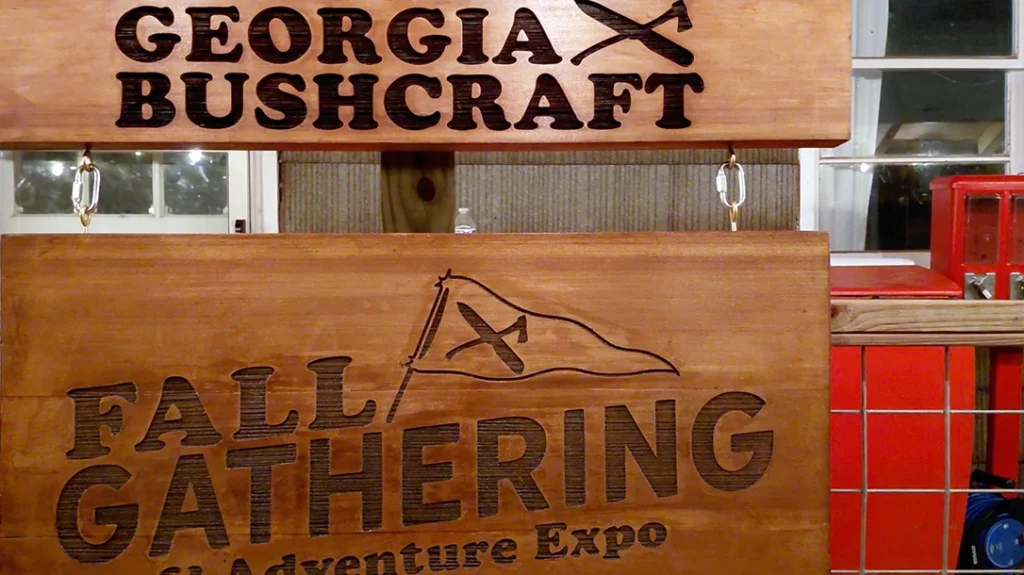There’s something unmistakable about the aroma of pipe tobacco. It lingers like a memory. Heavy and sweet, rich with nostalgia, it feels less like smoke and more like a ritual—like stepping into a conversation that has been happening for generations. A good pipe isn’t just something you smoke; it’s something you use to mark time. And if you’re getting into this world, or if you’re circling back to it after a few years away, let’s talk a little about what makes it so special.

Pipe Smoking Culture
Pipe smoking isn’t some clever modern hobby—it’s ancient. It predates cigars, cigarettes, and every nicotine delivery system we’ve come up with since. Its roots are Indigenous, born in the Americas where tobacco was sacred and ceremonial—used to mark covenants, express grief, honor spirits, and forge peace. Europeans didn’t invent the pipe; they adopted it after encountering the tradition in the New World.
Advertisement — Continue Reading Below
When tobacco crossed the Atlantic, it changed the world. Suddenly, men like Sir Walter Raleigh were puffing white clay pipes in English courts, and across Europe, pipe smoking exploded into both vice and virtue. Over the centuries, materials evolved—from clay to meerschaum to briar—and so did craftsmanship. By the 1800s, pipes had become deeply personal objects. Not just utilitarian, but expressive. You could tell a lot about a man by the pipe in his teeth.
Pipe Shapes
One of the most overlooked aspects of pipe smoking is just how much shape matters. It’s not just about aesthetics—though let’s be honest, a bent Billiard or a long-stemmed Churchwarden has a kind of soul to it. Shape affects how a pipe feels in the hand, how it draws, how it smokes, and how it ages. If you’re just getting started or trying to dial in your preferences, understanding pipe shape will help you get there faster.
Here’s a quick breakdown of the most common shapes and what they offer:
Advertisement — Continue Reading Below
• Billiard
The classic straight-stemmed design. This is often the first pipe a new smoker grabs, and for good reason:
o Straight, vertical bowl with easy-to-clean geometry
o Balanced airflow and consistent burn
Advertisement — Continue Reading Below
o Great for trying out a wide variety of tobaccos
o Simple, timeless look
• Bent Pipes (Half-Bent or Full-Bent)
These curve downward to some degree and are all about comfort and cooler smokes. Any pipe shape can be constructed “Bent”.
Advertisement — Continue Reading Below
o Smoke path is longer, which can help cool the draw
o The bend keeps moisture away from your mouth
o Great for clenching—hangs naturally from the jaw without a death grip
Advertisement — Continue Reading Below
o Slightly trickier to clean, depending on the bend
• Bulldog / Rhodesian
Characterized by a squat, thick bowl and diamond or oval shank.
o The thick bowl walls help insulate heat
Advertisement — Continue Reading Below
o Often provides a firm, grippy feel—very tactile
o Known for a dry, flavorful smoke
o A working man’s pipe that doesn’t sacrifice charm
Advertisement — Continue Reading Below
• Dublin
A tapered bowl that flares outward at the rim.
o Wide opening makes it easier to pack and light
o Enhances flavor through open airflow at the top
Advertisement — Continue Reading Below
o Great for complex blends that benefit from a broader combustion area
o A little more “refined” in look and function
• Churchwarden
The long-stemmed silhouette you’ve seen in Tolkien movies.
o Exceptionally cool smoke thanks to stem length
o Encourages slower, relaxed puffing—almost meditative
o Not particularly portable, but great for home or fireside
o Not the best beginner pipe, but worth owning for the experience
• Canadian / Lumberman / Lovat
These feature long oval shanks and short stems.
o Cool smoke with a trim footprint
o Balanced between elegance and practicality
o Lovat features a round shank with a saddle bit; Canadian is longer with an oval shank
o Often underrated but very rewarding to smoke
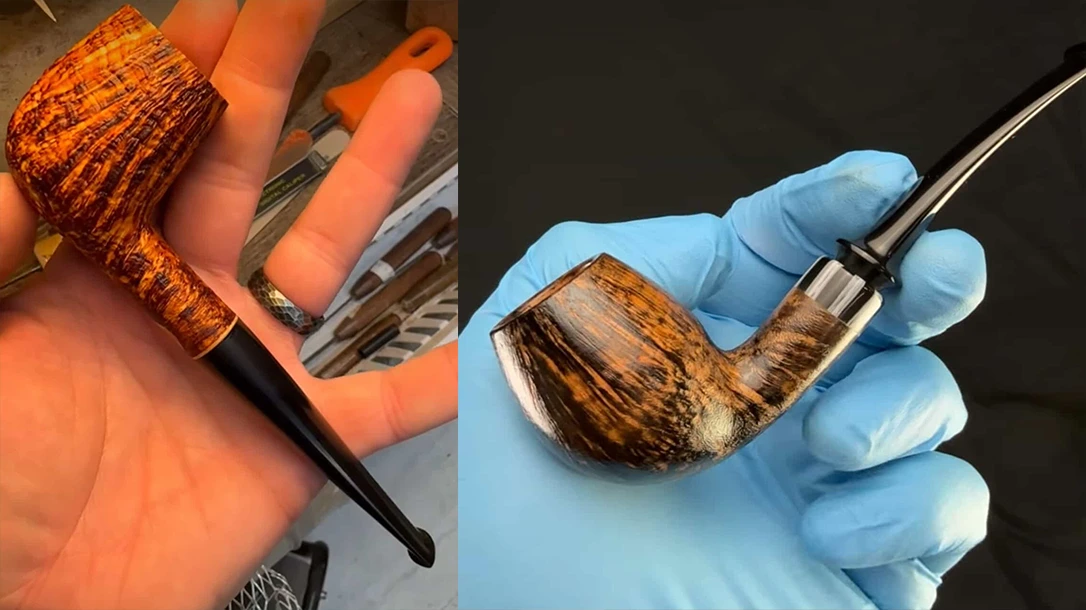
What Shape Actually Does
Apart from how they look and feel, pipe shapes change the physics of your smoke:
• Longer stems = cooler smoke
• Thicker bowl walls = better heat management and comfort
• Shape and airflow = changes how the tobacco combusts, which can reveal (or mute) flavor nuance
There’s a chemistry here, but there’s also poetry. It’s not just about combustion—it’s about character. The more pipes you try, the more you’ll start to notice which shapes match which blends, and which moods.
Pipe Smoking Tobacco
Tobacco is where it gets deeply personal. Think of each leaf as an ingredient—distinct, expressive, and influential. A good blend isn’t just thrown together; it’s composed, like a dish with balance, backbone, and nuance.
Here’s a closer look at the core leaves you’ll encounter—and what they bring to the bowl:
• Virginia
This is the high note in most blends.
o Bright, grassy, and naturally sweet—especially when aged
o Sugar content means it can “bite” if puffed too aggressively
o Often used as a base or primary component in blends
o Develops complexity over time; great for cellaring
• Burley
The mellow, grounding presence.
o Earthy, nutty, sometimes with hints of cocoa or wood
o Burns cool and dry; resists tongue bite
o Low in sugar, making it ideal for aromatic casings
o Adds body and roundness to a blend
• Orientals (a.k.a. Turkish)
The spice rack of pipe tobacco.
o Dry, floral, and sometimes sour or woody
o Adds brightness and texture without overwhelming
o Common in Balkan or English blends
o Acts as a flavor enhancer—used in moderation, it elevates everything else
• Latakia
Smoky, deep, unmistakable.
o Fire-cured over hardwoods, often cypress or oak
o Leathery, peaty, and campfire-rich
o Defines traditional English mixtures
o A love-it-or-leave-it leaf—bold, non-aromatic, unapologetic
• Perique
The wild card.
o Grown only in St. James Parish, Louisiana
o Fermented under pressure in barrels
o Spicy, figgy, rich—adds depth and backbone
o Usually used in small amounts; too much can overwhelm a blend
These aren’t just flavor notes. These are personalities. Learning how they behave—how they burn, how they pair, how they evolve in the bowl—is what separates casual puffing from real appreciation.
Some days, you might want the bright tang of a Virginia-Perique combo. Other days call for the smoky enigma of a Latakia-heavy English. That’s the magic of pipe tobacco: it meets you where you are, and it can change with your mood, your pipe, or even the weather.
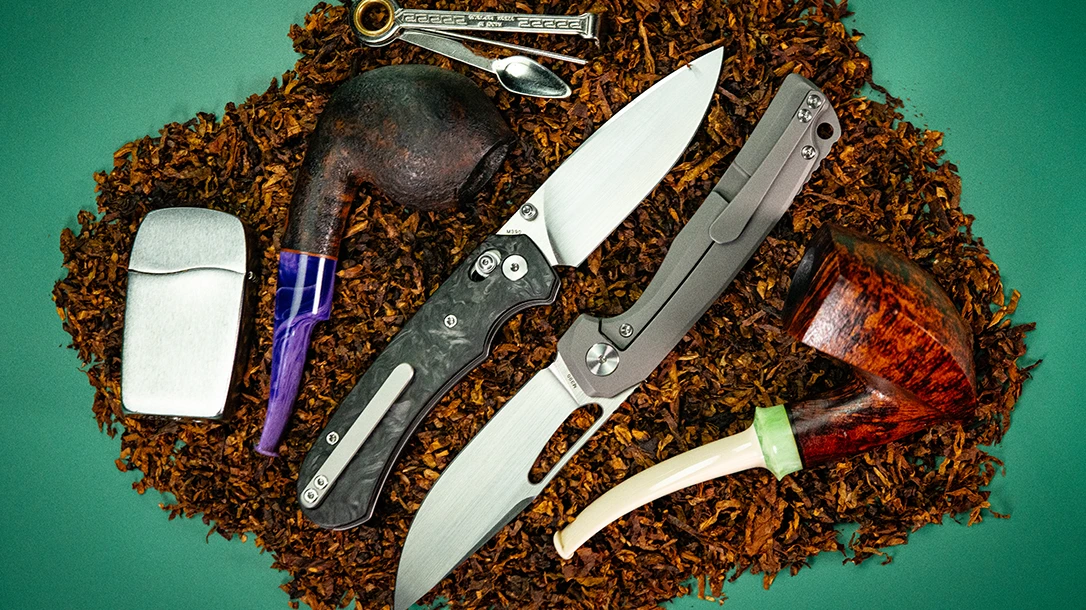
Aromatics
Most beginners start with aromatics. It makes sense. They smell great—vanilla, cherry, bourbon, whatever candy-coated nostalgia you prefer. They’re crowd-pleasers, and they remind many people of their grandpa. However, aromatics can burn hot, leave residue, and sometimes underwhelm in terms of taste. They’re not bad—but they’re not the whole story.
Non-aromatics, or “natural blends,” let the tobacco speak for itself. That’s where you find the real depth. A well-aged Virginia can taste like hay and honey. A Latakia-heavy English might evoke old books and pine forest. These aren’t dessert blends—they’re stories. They’re slower to love, but once you’re in, you don’t go back.
Pipes and Whiskey
I’d be remiss if I didn’t mention the bond between tobacco and whiskey. It’s not just romantic—it’s chemical. Tobacco and whiskey make a natural pairing not just because of their shared ritual and richness, but because of how they chemically interact on the palate. When tobacco burns, it releases a host of volatile compounds—sulfur-based molecules like thiols and sulfides, along with aldehydes, phenols, and organic acids.
While these compounds are often associated with pungent, smoky aromas—think burnt match, roasted garlic, or char—in low concentrations, they do something more subtle: they modulate taste perception. In particular, certain sulfur compounds can prime or activate the sweet receptors on the tongue, enhancing your sensitivity to sweetness.
So when you follow a draw of tobacco with a sip of whiskey, your palate is better tuned to perceive the spirit’s deeper notes—caramel, vanilla, dried fruit, and barrel spice. The smoke doesn’t just complement the whiskey’s flavor; it prepares your mouth to receive it more fully, creating a layered, sensory experience. It’s less about matching flavors and more about the chemistry of perception. Together, they offer a warmth and richness neither could deliver alone.
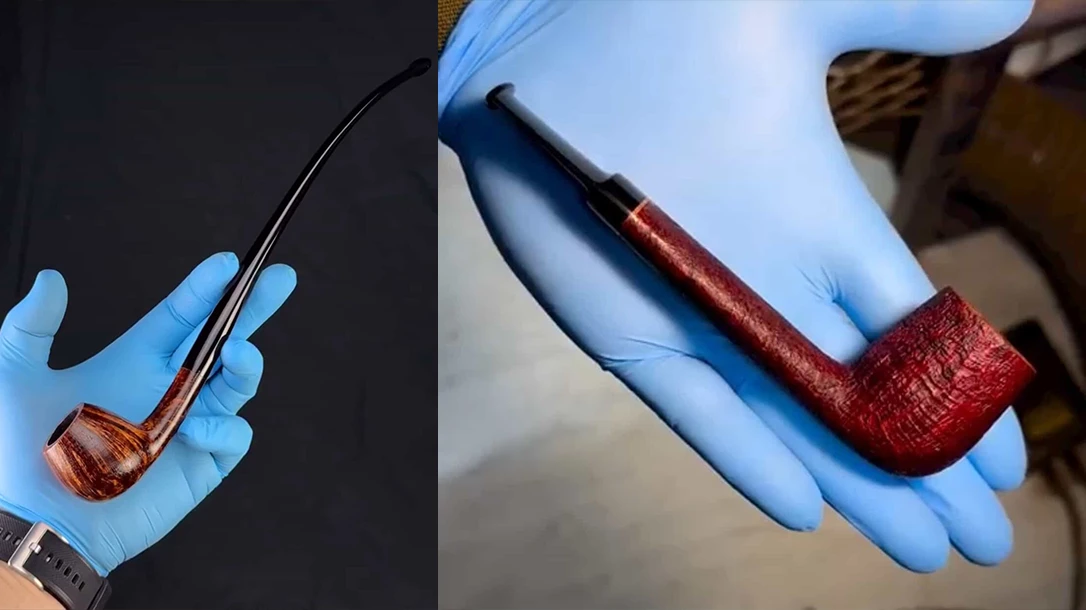
Custom Pipes
Here’s where the modern pipe renaissance comes in. We’re living in a time when custom makers—individuals working in Montana, California, Italy, and Japan—are crafting one-of-a-kind pieces that function like heirlooms. These aren’t mass-produced. They’re art you can use.
My friend Sean Reum, based in Montana, is one of those rare craftsmen. The kind of guy who will ask you what you smoke, how you draw, how you hold a pipe—and then build you something that feels like it’s always been yours. His pipes are unique, tactile, and meticulously crafted. You won’t find another like it. And there’s something powerful about that.
If you commission a pipe, here’s my advice: don’t micromanage. Give the maker room. Tell them what you enjoy, give them a budget, and let them surprise you. Some of the best pieces I own were born from trust, not instruction. And every time I light one, I remember the story behind it.
The Pack
Packing a pipe is both a technique and a ritual—it sets the tone for your entire smoke. The classic three-step method is a great starting point: gravity-fill the bowl loosely, then tamp it gently. Add a second layer with a bit more pressure, and finish with a firm top layer that still allows airflow. Think of it like shaking hands—not too loose, not too tight. You want resistance on the draw, but not a clog. A well-packed pipe will light evenly, burn slowly, and deliver consistent flavor all the way down.
Ritual Matters
Pipe smoking isn’t about nicotine. Not really. It’s about pacing. It’s about pause. It’s about the quiet rhythm of packing, tamping, puffing, and reflecting. It’s analog. It doesn’t rush you. In a world built for scrolling and swiping, pipe smoking demands presence. It asks you to sit with your thoughts—and maybe with a friend—and just be.
I don’t smoke nearly as much as I used to. But when I do, it’s intentional. It’s grounding. It’s good. And that’s enough.
If this article got your gears turning, start small. Pick up a pipe. Try a few blends. Ask a question online. Reach out to a maker like Sean. You might just find that pipe smoking isn’t a hobby—it’s a practice. And one worth preserving.
—
Sean Reum created all the pipes featured in this article. Visit reumpipes.com, and if you end up ordering one, tell him Mitch sent you.
Shoot straight. Smoke slow.
